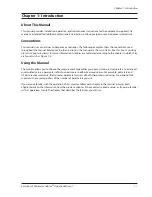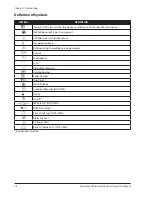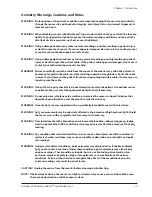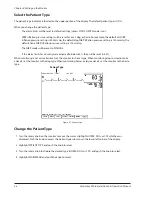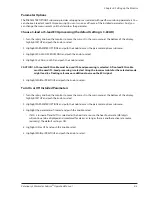
Chapter 3: Controls and Features
Veterinary 3 Parameter Advisor
®
Operation Manual
3-3
Parameter Box
Parameter Box When you turn on a parameter, a box appears on the display containing the parameter or
measurement name, the numeric values for the selected measurement, the high and low
alarm limits, a descriptor for the alarm limits displayed, and the measurement unit. In figure
2-2, the parameter is ECG, the numeric measured value is the heart rate (HR), the alarm limits
shown are for the heart rate (HR), and the measurement unit is beats per minute (bpm).
Parameter Name
The name of the monitored parameter is displayed. The parameter
name box provides access to a menu for the parameter where you can
adjust various settings related to the parameter.
Numeric Measured
Values
The number value for the selected measurement (such as HR or SpO
2
) is
displayed. The value may be derived or calculated. Dashes (- - -) in place
of a numeric measured value indicate that the measurement is invalid
or unavailable.
High and Low
Alarm Limits
The high and low alarm limits for the numeric measured values are
displayed. If you do not set alarm limits for a new patient, the default
high and low limits will be used.
Alarm Limit
Descriptor
The alarm limit descriptor indicates which high and low limits are
displayed. For the parameters where more than one measurement can
be monitored such as blood pressure (systolic, diastolic, and mean) only
one set of high and low limits can be displayed. You can specify which
set of limits is displayed. Alarms are issued if any one of the limits is
violated, whether or not it appears on the display.
Measurement Unit
Units of measurement can be changed for pressure. Pressure
measurement units may be displayed as millimeters of mercury (mmHg)
or kilopascals (kPa).
Measured Value
Alarm Limits
Parameter Name
Alarm Limit Descriptor
Measurement Unit
Figure 3.2: Parameter Box



